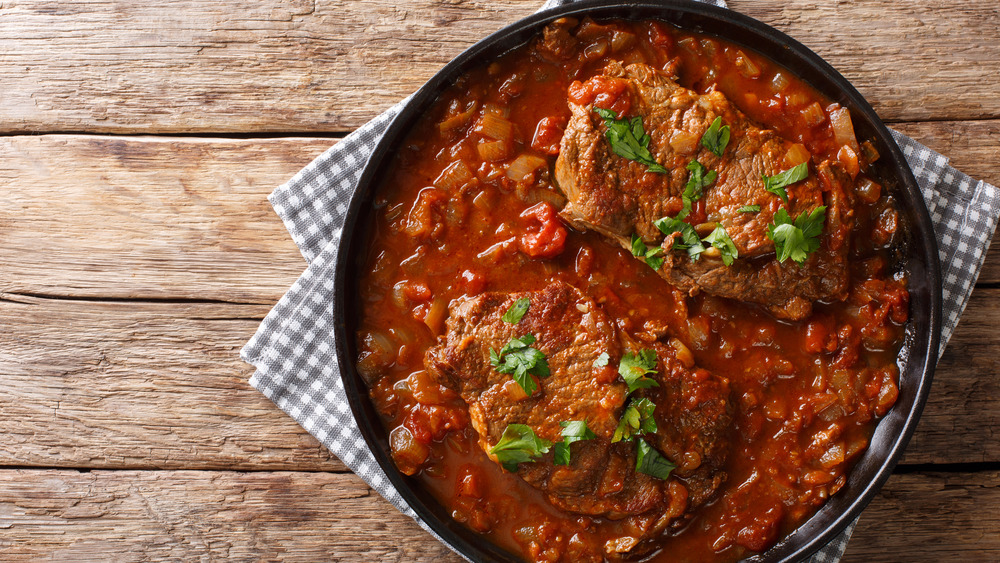What You Probably Didn't Know About Swiss Steak
Ah, Switzerland! What wonders has this gorgeous, alpine country given the rest of the world? Chocolate? Check. Knives? Check. Fondue? Check. Steak? Che — well, not exactly. As it turns out, Swiss steak is not really Swiss at all! According to Culinary Lore, Swiss steak may be named for the way it's prepared. The term "swiss" means to pound or roll fabrics to flatten them. Similarly, steak must be pounded flat to create Swiss steak.
While some version of Swiss steak has been around since at least 1915, tomatoes weren't added until the 1930s. Later, Reynolds played a big part in popularizing Swiss steak in 1947 by including a recipe that included frozen vegetables, and, of course, involved lining the pan with their foil. Common elements of today's Swiss steak recipes include pounding round steak with flour, salt, and pepper, browning the meat in a skillet, finishing it off by adding onions and tomatoes, and cooking the combination in the oven or on the stovetop.
Making Swiss steak in a slow cooker
A popular spinoff of the traditional Swiss steak is a version that's prepared in a slow cooker. The Magical Slow Cooker explains that the swissing action, or pounding of the meat, is not necessary when going the slow cooker route. Round steaks are preferred for the recipe, but there is some flexibility. Top or bottom round roasts, cubed steak, chuck roast, or cubed stew meat can be substituted.
The steaks are cut into thick slices, dredged in flour, salt, and pepper, and browned on a skillet. Beef consommé is added to the skillet; the browned steaks are thrown into the slow cooker. Any remaining flour and the beef consommé from the skillet are added to the steaks in the slow cooker along with tomatoes, onion, bell pepper, garlic, and Worcester sauce. The slow cooker is set on low for seven hours, giving you enough time to work up an appetite armchair refereeing two football games. Mashed potatoes, steamed rice or vegetables, salad, or garlic bread all make great sides for the finished dish.

